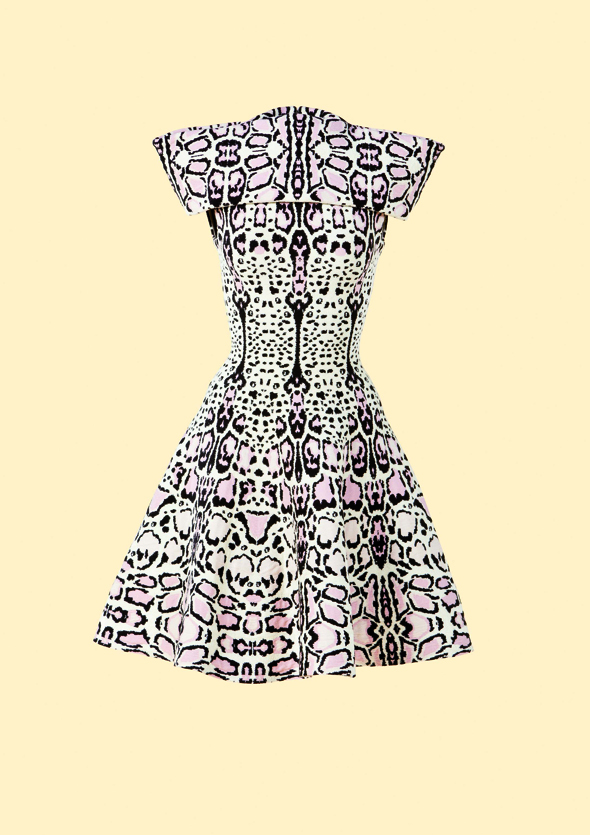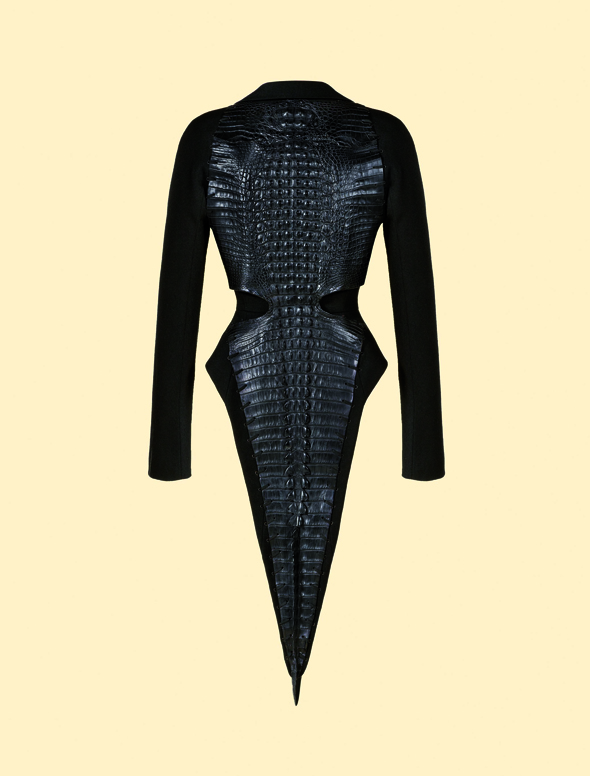
The work of the legendary “King of Cling” aka Tunisian-born designer Azzedine Alaïa will be exhibited in a new show at Dusseldorf, Germany’s NRW-Forum, documenting his best designs from the last decade. “Azzedine Alaïa – Couture in the 21st Century” will feature pieces loaned directly from the designer, including some of the revolutionary garments that earned him a reputation for erotic and daring clothing particularly popular with stars as diverse as Grace Jones, Lady Gaga
and Michelle Obama.
“[They] found it too S&M,” he concedes in an interview for The Ground magazine in 2011, aware of, but unaffected by, his public image among buyers and other designers. An outspoken defender of artistry and true creativity, Alaïa caused controversy in the same interview with his open distaste for the commercialism of high-profile figures Karl Lagerfeld and Anna Wintour. Strong-willed in his aversion to the increasing pressure on designers to produce high quantities at high speed, he pays little attention to the seasons and only shows his work when it is ready. It is perhaps this commitment to ripening slowness that contributes to the intense sensuality of his work. Known for the perfection of his cuts as well as his design innovations, Alaïa is the proud pioneer of the iconic snake-like zipper dress, which curls around the breast and waist, finally encircling the “most beautiful part of the bottom…so when you want to show your bottom, you open it and your bottom looks beautiful!”
Growing up in Tunisia, Alaïa was one of few men interested in fashion, and he took up studies at the Tunis School of Art against his father’s will. A brief and unspectacular stint at Dior in Paris during the Algerian War ended after five days. His Tunisian nationality caused tension, but he was not dissuaded. He has now lived and worked in Paris since the 1950s, based in the ultra-trendy Marais district. Considered to be one of the most influential fashion designers, he was named a Chevalier de la Légion d’Honneur by the French government in 2008 and designed opera diva Jessye Norman’s infamous costume for the 1989 bicentennial of the French Revolution. But despite the high culture prestige, his iconic designs also reach pop culture, his name famously featured in the movie ‘Clueless.’ “Oh, no. You don’t understand…” says Cher, clad in a tight-fitting dress and refusing to drop to the ground despite being held at gunpoint, “…this is an Alaïa.”
The new show at NRW will be curated by Mark Wilson (Groninger Museum), and will be structured by material, with each room dedicated to a different textile. This practical, matter-of-fact division of the work reinforces the brilliance of a designer who often works with the same fabrics but whose artistry has never been restricted by materialism. “I don’t create a story.” From the black knit dress worn by Michelle Obama at the NATO dinner in France in 2009, to the Grace Jones outfits, rubber coats and super-tight seductive garments that fueled his fame in the 1980s, the diversity of his appeal is a testament to his intense creativity and originality.

Wilson and Alaïa have a long-established friendship and working partnership. Over their 15 years of friendship Wilson has curated all three of Alaïa’s previous exhibitions and the tradition continues with this sequel that sees the show move to Germany from The Netherlands, where it was originally presented at The Groninger Museum. The NRW-Forum in Düsseldorf features an ever-changing program of exhibitions “that challenge each subject within their cultural context.” Previous shows have been dedicated to Alexander McQueen, Manolo Blahnik and Vivienne Westwood as well as more niche designers and craftspeople. Committed to a convergence of ideas, the NRW-Forum fuses art, fashion, design, and architecture to create an alliance that explores “the penetration of media sources as well as the merging together aesthetic forms.” This establishment, with its determinedly interdisciplinary approach, provides a fitting home for a designer who is currently collaborating with the Los Angeles Philharmonic and Pritzker Prize-winning architect Jean Nouvel on a forthcoming production of The Marriage of Figaro, conducted by the rising star of Venezuela’s Simon Boliva Orchestra, Gustav Dudamel.
The man dubbed the “sculptor of women’s bodies” spent time assisting a midwife in Tunisia, Madame Pinot, delivering his first births at the age of 10. It was this same Madame who instilled in him not only an interest in the female form but also fashion. This fascination-fueled artistry somewhat explains his independent approach that is not concerned with trends but simply takes inspiration from the world around him. According to Wilson, one of the strongest areas of the show is “not a single work but the whole animal print and skin…Alaïa loves animals, his house is full of cats and dogs, he stays up late watching National Geographic.” Such warmly recounted anecdotes and fond observations are copious of a man who is as dedicated in friendship as in his commitment to fashion. He is currently working on establishing the Alaïa Foundation, where he will display his own pieces as well as those of designers he most admires.
Until the invite to dine at his studio in the Marais arrives, the NRW-Forum will have to do. Showing from June 8th to September 8th, this collection of work from one of the last major living couturiers promises to showcase the inspiring breadth and beauty of a designer who is always evolving and instinctively free.
Text by Heidi Goldsmith
Photography courtesy of Groninger Museum / NRW-FORUM

